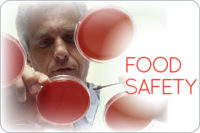Over the last 25 years, modernization has overrun the food safety landscape in previously unimaginable ways. Environmental and finished-product sampling programs are undoubtedly among the most important aspects of the industry’s success. These programs not only enhance the likelihood of preventing the release of contaminated products but, perhaps more important, they teach us a lot about our programs, our suppliers, our processing environment and the pathogens we fight against.
Yet, despite the success, recalls continue to occur with increasing frequency. Moreover, these recalls can be more damaging than in the past because of an emerging shift: a new recall model. In the past, recalls were typically confined to products produced during narrow, well-defined,periods of time. That is no longer the case. Instead, enhanced regulatory sampling capabilities show recalls increasingly involve weeks, months or even years of production. The new tools used by investigators allow for the detection of low-intensity outbreaks responsible for intermittent illnesses occurring over long periods of time. Such outbreaks are often caused by niche organisms that persist in dark, difficult to reach parts of facilities or equipment. In addition, databases such as Pulsenet and GenomeTrakr, which contain millions of isolates, allow regulators to instantly identify matches between positive samples and illnesses that occurred years ago.
A company producing the products implicated in such an outbreak may have an excellent food safety program, record and personnel who diligently search for but only occasionally collect positive samples. Perhaps counter intuitively, the best sampling programs can lead to the most devastating recalls because infrequent positives are more readily dismissed as transient, rather than persistent, events.
Moreover, positive findings tell us little about whether (or even where) pathogens may be persisting. Not knowing can have grave consequences. Given the plummeting cost and increasing efficacy of genetic sequencing, companies should consider augmenting environmental and finished-product testing programs by subtyping positives. Conducting a comprehensive facilitywide microbiological profile is a good first step. The most obvious advantage of subtyping is achieving a better understanding of the pathogen profile, i.e., transient versus persistent.
There are some risks involved with this course of action, so companies should consult with their legal counsel and be sure to utilize an approach that will allow their information to remain protected. As outbreak surveillance continues to improve, companies must rapidly adapt to the threats posed by both pathogens and regulators. By finding and eliminating the existence of pathogen harborages, you will better protect your customers and your business.
Put differently, sometimes the best defense is a good offense. NP





Report Abusive Comment